FOUNDATIONS REVEALED COMPETITION ENTRY

War of the Roses shift
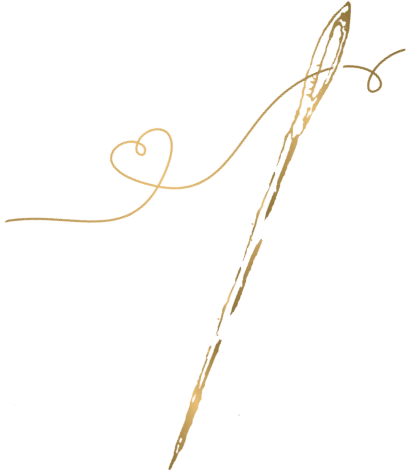
Outline the story …
I recently reread 'Levend Verleden', the Dutch translation of "Knight Errant: by R. Garcia y Robertson.
Robyn Stafford, a Hollywood resident of our time (ca 2000AD) is heartbroken when her British date turns out to be married. To relieve her anger she goes hiking near the Welsh border. There she encounters a knight on horseback, who confidently identifies himself as Edward Plantagenet, Earl of March, and asks directions to a nearby abbey. He thinks the year is 1459 and is awed by her detailed, printed map and working cell phone. She thinks he's barmy, but when three hostile knights and two dozen bowmen arrive, he sweeps her up in front of him and carries her off to safety, before turning back to valiantly fight off his enemies. When he returns, he asks her to come and be his lady once he has beaten the king. After a parting kiss, he rides away, into the distant past, to the age of the War of the Roses. Robyn is desperate to reconnect with him and is even willing to try witchcraft to do so. The ritual is sabotaged and she is physically sent to 1460.
During her struggles in that time, a 'white underdress' is mentioned several times, which I think is the Shift worn at that time. I do not have access to the English version to check terminology. Historical accuracy in the book is debatable, since undertrousers are mentioned too, but that might be a translation error.
Outline the construction…
The resources that helped me the most to complete this garment are the video's on shift construction by Morgan Donner and Bernadette Banner. I used Morgan's pattern mostly, except for the neckline, where I used a mix of Morgan's and Bernadette's method. Cut a tiny hole for my head, put it on and mark, then make it neat like Bernadette's.
The shift is made out of linen. It was the last bit on the bolt, so just like Morgan I needed to do shoulder seams to get enough length, which was limited to the fabric length left after removing the sleeves. I used the thread-pull method to make my pattern pieces on grain.
One challenge I had to overcome was my lack of linnen thread. I used the leftover pieces of linnen and pulled out workable lengths of thread and waxed them with some beeswax I had once bought to make lip balm. Not ideal, but it worked.
There were three firsts for me in this project. First time working with linnen, first time flat-felling seams and first time completing a whole garment by hand. The one part that I'm actually not really satisfied with yet, is where the sleeves meet the side of the garment. I might change that at some point, but for now it will have to do.

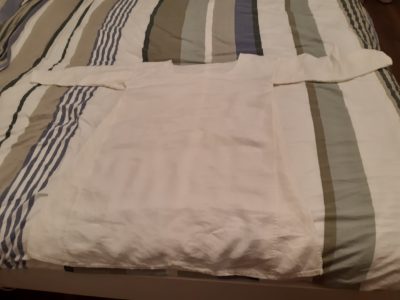
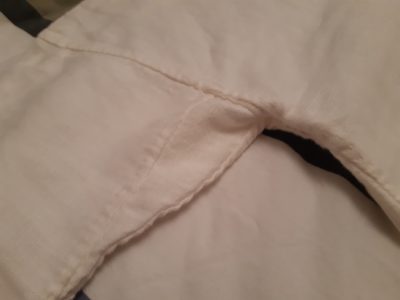
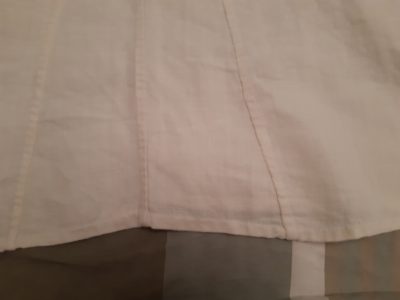
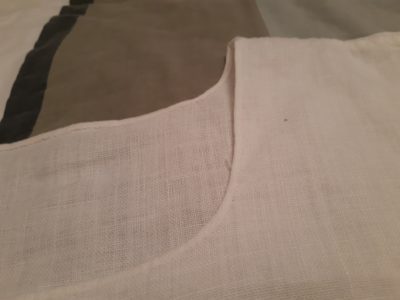
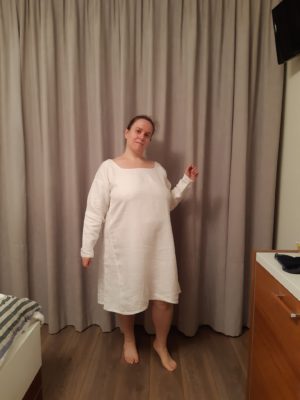
Your work looks so neat – incredible hand sewing!
I’m impressed by your ingenuity regarding your lack of linen thread. What an excellent use of scraps… and beeswax, for that matter! What an amount of work! Well done.
Very impressive shift, and using the leftover linen to make thread is amazing!
This shift is so neat! You can easily see the hard work that went into it❤
Hand sewing whole garment is so much work. I admire your patience.
You are so brave to take on project with so many new challenges in it. Congratulation on completing the piece!
Your seams are so beautiful. Can’t believe you did it with linen, and then turned around and used beeswax to create your thread. Amazing.
I can just imagine this under a 1460s gown! Great work! I greatly admire your dedication in hand sewing this garment – many kudos on an excellent job!!